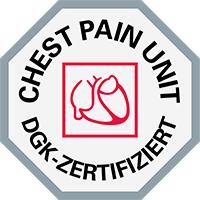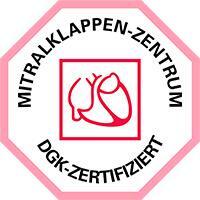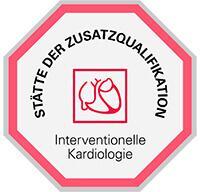During the last two decades, there has been a progressive increase in the prevalence of heart failure and mortality of patients due to its acute form. This is due to the increased survival rate of patients with heart diseases and vascular diseases, in particular those who have had an acute coronary syndrome and thus objectively predisposed to the development of heart failure and pulmonary hypertension. Acute heart failure along with pulmonary hypertension is the most frequent cause of hospitalization and vascular mortality.
Content
- Why does heart failure occur?
- Types of acute heart failure
- Types of pulmonary hypertension
- How does pulmonary hypertension manifest itself?
- Treatment principles
- Why undergo treatment in German hospitals?
- The cost of treatment in Germany
Why does heart failure occur?
Acute heart failure occurs due to cardiac and non-cardiac causes, which can be transient or cause irreversible damage to the heart, leading to acute heart failure. Pulmonary arterial hypertension is one of the main pathogenetic factors of heart failure development caused by the impaired diastolic function of the left ventricle – the so-called diastolic heart failure, which according to modern concepts in medicine refers to the clinical syndrome of chronic heart failure with preserved LV systolic function.
Cardiac dysfunction is associated with myocardial systolic or diastolic dysfunction, acute valve dysfunction, cardiac tamponade, rhythm or conduction disturbances, and pre- or post-load mismatch. Numerous non-cardiac diseases can lead to acute heart failure mainly due to the effect on pre- and post-load, including increased afterload with systemic arterial hypertension or pulmonary hypertension, massive pulmonary embolism, increased preload with increased fluid intake, or decreased fluid excretion (with renal failure, endocrine diseases), infection, thyrotoxicosis, anemia, and Paget’s disease.
If circulating blood volume, cardiac minute volume, total peripheral vascular resistance, capillary permeability, and transport properties of blood are normal, then tissues receive enough O2 and nutrients to satisfy metabolism. When one or more of these indicators are disturbed under the influence of extreme factors of the external or internal environment as a result of excessive or inadequate compensatory reactions of the body (sympathetic-adrenal system), a crisis of microcirculation and metabolism develops by a chain reaction. A mismatch between the metabolic needs of cells and their perfusion disrupts metabolism in many organs and tissues. Such a pathological process is denoted by the term of shock. Its etiology and pathogenesis are different, so the clinical diagnosis of shock is supplemented by determining the cause and mechanism of its development, which can be traumatic (after severe injuries, postoperative), hypovolemic (as a result of loss of blood, plasma, fluid from trauma, burns, intestinal obstruction, vomiting, diarrhea), cardiogenic (disorders of vascular contractility as a result of heart attack, myocarditis, cardiomyopathy, severe arrhythmias, pericardial tamponade, pulmonary embolism), anaphylactic, or metabolic (against ketoacidosis, thyrotoxicosis). Mixed types of shock are often observed.
Acute circulatory insufficiency is the main syndrome of many types of shock. However, changes in the main hemodynamic components are different. For example, in hypovolemic shock, cardiac function is increased, and venous blood returns to the heart are decreased. In cardiogenic shock, cardiac function and vascular tone are reduced, while the venous return is increased. In endotoxic shock, all three vascular functions are depressed.
Energy deficit and cell death lead to functional insufficiency of tissues and organs with further homeostasis disorders due to the action of products of cell destruction, excess of some adaptation reactions, which can themselves violate the internal environment constancy and be the initial links of vascular circles.
The resulting disorders of cardiovascular, pulmonary (pulmonary arterial hypertension, in particular), and other vital systems result in decreased delivery of O2 and oxidation substrates to the cell, which aggravates energy metabolism disorders and thus closes a vicious circle. The progression of shock is largely determined by secondary disorders of the functions of individual organs.
Types of acute heart failure
There are several different types of acute heart failure differentiated in medicine. They are as follows:
- Acute decompensated heart failure. It happens usually for the first time in the form of decompensated chronic heart failure. It has mild symptoms, pulmonary hypertension, or hypertrophic cardiomyopathy, not meeting the criteria of cardiogenic shock.
- Hypertensive acute heart failure. Acute heart failure symptoms in patients with relatively preserved left ventricular (LV) function combined with high blood pressure (BP) and a radiological picture of pulmonary venous stasis or pulmonary hypertension.
- Pulmonary edema (confirmed by chest radiography). It implies severe respiratory distress with moist wheezing in the lungs, orthopnea, and usually less arterial blood oxygen saturation.
- High cardiac output chronic heart failure. Symptoms of this type of acute heart failure in patients are usually combined with tachycardia, warm skin and limbs, stasis in the lungs, and sometimes low BP (septic shock).
- Left ventricular insufficiency. Low LV syndrome combined with elevated pressure in jugular veins, liver enlargement, and pulmonary arterial hypertension.
- Cardiogenic shock. It is a clinical syndrome characterized by tissue hypoperfusion due to heart failure, which persists after preload correction. There is usually pulmonary arterial hypertension and/or decreased diuresis rate. Manifestation may be associated with the presence of tachyarrhythmias, as well as marked LV contractile dysfunction. In the latter case, heart rate (HR) usually exceeds 60 bpm and there are no severe tachyarrhythmias. The presence of stasis in the tissues is possible, but not necessary. Low LV syndrome and cardiogenic shock are different stages of the same process.
Types of pulmonary hypertension
The clinical classification of pulmonary hypertension has changed over the years. Today, based on the similarity of pathogenetic features, clinical presentation, and treatment approaches, five groups of pulmonary hypertension are distinguished: pulmonary arterial hypertension, including idiopathic and other forms, pulmonary hypertension due to left heart (or left ventricle) pathology, pulmonary hypertension associated with respiratory system pathology and/or hypoxia, chronic thromboembolic pulmonary hypertension and other pulmonary artery obstruction, and pulmonary hypertension with unclear and/or multifactorial mechanisms.
Two main types of pulmonary hypertension are distinguished: primary and secondary.
Primary (idiopathic) pulmonary hypertension is a rare disease with unknown etiology, in some cases it is hereditary. In this situation, pulmonary hypertension can be transmitted not only from parents but from grandparents and even great-grandparents as well. Both congenital and acquired primary pulmonary hypertension are characterized by the increased mass of the right ventricle and atherosclerotic changes in the pulmonary artery. According to general recommendations, this disease is called idiopathic pulmonary hypertension. Idiopathic pulmonary hypertension is a rapidly progressive disease with a prevalence of 5-6 per million people. It causes disability and, if left untreated, leads to the premature death of the patient. The diagnosis of idiopathic pulmonary hypertension is based on the exclusion of other known and more common causes of elevated pressure in the small circulatory system.
Secondary pulmonary hypertension is caused by other diseases. It is associated with connective tissue diseases (for example, systemic scleroderma, systemic lupus erythematosus, vasculitis), HIV infection, congenital heart disease, can occur after a pulmonary embolism, heart failure, and acquired heart defects (for example, mitral stenosis, and pulmonary artery thromboembolism). Pulmonary hypertension can also accompany lung diseases, but with them, as a rule, does not reach a high degree. Currently, there are more than a hundred diseases in which pulmonary hypertension develops as a secondary manifestation, i.e. a complication of the underlying disease.
How does pulmonary hypertension manifest itself?
Pulmonary hypertension implies a group of diseases characterized by increased pulmonary artery pressure. Gradually progressing pathology is dangerous with complications, one of which is heart failure and, as a consequence, death of the patient. Virtually asymptomatic development of pulmonary hypertension in its early stages leads to the fact that in about 80% of cases it is possible to diagnose the disease only after the changes have become critical.
Symptoms of pulmonary hypertension depend directly on the stage of the disease and the cause of its occurrence.
In the first stage of the disease, there are usually no obvious symptoms.
The most frequent symptoms of pulmonary hypertension of the second stage are shortness of breath, which is especially acute with emotional stress, weakness, reduced work efficiency, fatigue, frequent dizziness, fainting, pressing pain in the heart area, pale skin, weak pulse, cold extremities, low blood pressure, and blueness of the skin.
The third stage of the disease is characterized by the aggravation of the above signs of pulmonary hypertension. And also dry cough, hoarseness of voice, hemoptysis (occurs in one-third of patients with primary pulmonary hypertension), edema of the lower extremities, and ascites appear. It is important to understand that these symptoms of pulmonary hypertension are only its possible (but not necessary) signs, the overall clinical picture of the disease also includes symptoms of the specific disease that caused the development of pulmonary hypertension.
Treatment principles
Therapy for pulmonary arterial hypertension and heart failure should be aimed at normalization of blood circulation and oxygen saturation of organs and tissues. A more detailed plan includes improvement of myocardial energetics, reduction of metabolic requirements of tissues, an increase of O2 delivery, restoration of blood pressure, rheological properties of blood, and microcirculation.
Several principles of drug therapy will follow that apply to specific clinical situations.
- In low or normal extracellular fluid in the body, infusion therapy is indicated to increase it. The deficit is compensated by plasma substitutes, saline solutions, whole blood, and its preparations. The choice of means and their ratio are determined by the nature of the pathological process and the degree of hypovolemia.
- For pulmonary arterial hypertension and high vascular resistance, β-agonists (for example, dobutamine) are indicated. Dobutamine is a selective β-adrenoreceptor agonist with a pronounced cardiotonic effect and weak vasodilator properties. It is less valuable in cardiogenic shock, since it does not always increase blood pressure, but it decreases vascular resistance. In severe arterial hypotension, β-agonists together with some a-adrenomimetics are more suitable for BP increase, because vascular stimulation of α-adrenoreceptors, causing their narrowing, will prevent reduction in BP.
- If vasoconstrictors are necessary, α-, β-agonists are preferable to selective α-agonists, which can cause significant vasoconstriction. Dopamine, which has cardiotonic activity combined with renal and mesenteric vasodilation, remains the medicine of choice in drug therapy of acute heart failure and pulmonary hypertension. In some cases, dopamine can be replaced by norepinephrine to obtain a rapid vasoconstrictor effect and increase blood pressure. However, in hemorrhagic and cardiogenic shock with a sharp drop in blood pressure, norepinephrine should not be used due to deterioration of blood supply to tissues, stimulation of metabolism, and increased need of cells for O2 and oxidation substrates.
- Before increasing myocardial contractility, its metabolism must be normalized by delivering O2, oxidation substrates, potassium, and insulin. The effectiveness of the polarizing mixture increases when magnesium ion, cytochrome C, glucocorticoids, and ascorbic acid are added to it. Reduction of cellular O2 requirement is achieved by hypothermia, and increase in O2 delivery by inhalation of air enriched with O2, or artificial lung ventilation.
- Restoration of normal blood flow is promoted by blood plasma, albumin, hydroxyethyl starch solutions, glucose, gelatin, ascorbic acid, anticoagulants (dose depending on blood clotting time), antiaggregants, medicine with anti-enzyme activity, aminocaproic acid, activators of spontaneous fibrinolysis, magnesium salts, and glucocorticoids.
- In case of endotoxic shock or intoxication, causal therapy (antibiotics, antidotes) is also carried out.
Why undergo treatment in German hospitals?
If you need quality pulmonary hypertension and acute heart failure treatment in Germany, we invite you to use the services of leading cardiologists at German hospitals. German modern facilities, comfortable wards, highly professional staff, and individual approach to each patient allow achieving good results in the treatment of pulmonary hypertension and acute heart failure. Despite the achievements of modern world medicine, the causes of pulmonary hypertension have not yet been formulated, but doctors working in German hospitals succeed in the treatment of patients suffering from this condition.
German hospitals with the closet appointment date are:
- St. Vincentius Hospital Karlsruhe-Academic Hospital of the University of Freiburg.
- HELIOS University Hospital Wuppertal.
- HELIOS Clinic Krefeld.
- Academic Hospital Marien Duesseldorf.
- Vivantes Neukolln Hospital Berlin.
You can find more information about the hospitals for treatment in Germany on the Booking Health website.
The cost of treatment in Germany
The cost of treatment of pulmonary hypertension and acute heart failure, like any other disease, is individual for each patient and depends on several factors: the degree of the disease, methods of diagnosis and treatment, the prices for medicines, the general condition of the patient and the length of the stay in the clinic. If concomitant diseases and complications are treated at the same time, the cost of treatment increases.
The price is also formed by parameters such as the qualification of a doctor, hospital status, equipment used, tests done, etc. So, you can know the final price only on request, based on which you will receive an individual plan for treatment in Germany. If you have already received a medical program, you can check the compliance of the received prices with the average ones based on the price list.
You can find the average prices for treatment on the Booking Health website.
If you leave your request on the website, Booking Health can draw a preliminary cost of treatment in Germany in your clinical case.
Authors:
This article was edited by medical experts, board-certified doctors Dr. Nadezhda Ivanisova, and Dr. Bohdan Mykhalniuk. For the treatment of the conditions referred to in the article, you must consult a doctor; the information in the article is not intended for self-medication!
Our editorial policy, which details our commitment to accuracy and transparency, is available here. Click this link to review our policies.
Sources:
MedicineNet
Healthline
















